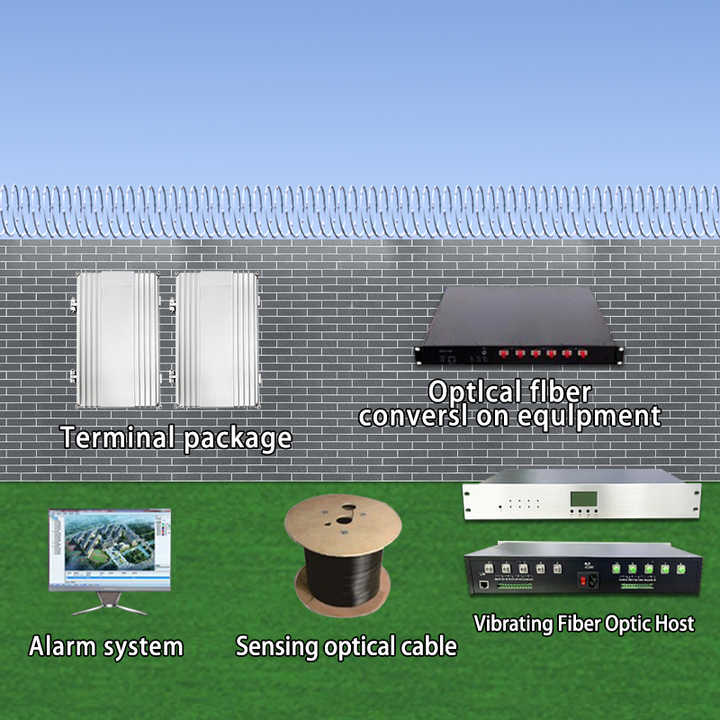How to Decide on a Fiber Optic Security System for Maximum Protection and Efficiency
How to Decide on a Fiber Optic Security System for Maximum Protection and Efficiency
Blog Article
The Ultimate Guide to Fiber Optic Safety And Security Solutions for Your Service
In an era where protection worries are critical for businesses, recognizing the complexities of fiber optic technology can be transformative. This overview outlines just how integrating fiber optic protection systems not just improves information defense but additionally uses advantages like resistance to interference and real-time monitoring capabilities.
Understanding Fiber Optic Innovation

The core of a fiber optic cable television is composed of a slim glass or plastic center, surrounded by a cladding layer that mirrors light back right into the core. Single-mode fibers are developed for long-distance transmission, while multi-mode fibers are appropriate for much shorter distances, commonly made use of within buildings.
Fiber optics are not just much faster but likewise a lot more secure than conventional circuitry. Their inherent resistance to electromagnetic disturbance and the trouble of tapping into the signal without discovery make them a recommended choice for companies focusing on information integrity and safety. As companies significantly depend on protected and effective interaction systems, recognizing fiber optic technology becomes important for notified decision-making.
Secret Advantages of Fiber Optic Safety
When taking into consideration protection options for a business, the advantages of fiber optic systems are particularly compelling. Fiber optic innovation uses outstanding information transmission speeds and bandwidth capability, making it optimal for dealing with high-resolution video feeds from monitoring video cameras. This capability ensures that safety and security personnel get real-time data, enhancing total feedback times to potential protection hazards.
In addition, fiber optic cords are naturally immune to electro-magnetic disturbance, which can jeopardize the integrity of traditional copper-based systems. This resistance makes certain that the information sent continues to be protected and uninterrupted, giving a much more dependable protection infrastructure. In addition, optical fiber are much less susceptible to physical damages, as they are made from glass instead of steel, decreasing upkeep costs and downtime.
An additional significant advantage is the enhanced scalability of fiber optic systems. As organization needs progress, fiber networks can be easily broadened to suit additional protection devices without considerable overhauls to the existing framework. Fiber optic systems offer improved cybersecurity attributes, consisting of encryption abilities that secure delicate data from unauthorized gain access to. Jointly, these advantages make fiber optic security systems a robust choice for services looking for to boost their security actions.
Installment Refine and Factors To Consider
Considering the complexities involved, the installation procedure of fiber optic protection systems calls for mindful preparation and implementation. The preliminary step involves a comprehensive read review website analysis to recognize ideal places for cabling and devices. This assessment should consider ecological aspects, existing facilities, and prospective vulnerabilities.

Furthermore, the setup must abide by neighborhood structure codes and market standards. This might consist of coordinating with various stakeholders such as structure supervisors, IT teams, and security employees to make sure seamless integration with existing systems.
Post-installation, strenuous testing is necessary to validate system performance and identify any kind of problems that might develop. By prioritizing these factors to consider throughout the installation procedure, companies can make certain a robust and reliable fiber optic protection system that meets their specific safety demands.
Most Current Innovations in Fiber Optic Protection
Current innovations in fiber optic modern technology have actually significantly boosted the capabilities of safety systems for companies. One of the most remarkable advancements is the integration of fiber optic sensors that can discover resonances and breaches along the border of a facility. These sensors give real-time surveillance, making it possible for fast feedback to potential violations.
Furthermore, the development of distributed fiber optic sensing technology permits for the constant monitoring of big areas with a single fiber cable. This method not only reduces setup expenses however also enhances the reliability of keeping track of systems by getting rid of the need for multiple, different sensors.
Additionally, improvements in multiplexing methods have actually made it possible for businesses to transmit large quantities of information over fiber optic networks, improving the capabilities of video clip surveillance systems. High-def video clip feeds can currently be sent out over long distances without loss of high quality, making sure that safety workers have access to clear and workable information.
Finally, making use of fabricated knowledge (AI) together with fiber optic systems is changing danger discovery. AI formulas can examine information from fiber optic networks to recognize unusual patterns or habits, permitting for proactive safety actions. These technologies collectively stand for a substantial jump ahead in fiber optic protection innovation.
Selecting the Right System for Your Service
Choosing the proper fiber optic safety system for your organization is essential for ensuring optimum protection and Learn More Here comfort. To make an informed selection, evaluate your certain security needs, taking into consideration factors such as the dimension of your premises, the nature of your operations, and potential vulnerabilities.
Begin by examining the degree of safety and security required; for instance, high-risk atmospheres may require innovative systems with integrated monitoring and breach discovery capacities. Next off, consider scalability; as your business expands, your safety system should be capable of increasing to fit boosted demands without substantial overhauls.
Furthermore, explore the dependability and performance of various systems. Search for suppliers with well-known reputations and client reviews that testify to their service quality. It's also a good idea to ask regarding the modern technology's compatibility with existing facilities, ensuring a smooth combination process.
Verdict
In verdict, fiber optic safety systems present a robust remedy for boosting business safety and security frameworks. The latest technologies better boost the efficiency of these systems, guaranteeing that companies remain safe and secure and adaptable in an ever-evolving danger landscape.
Report this page